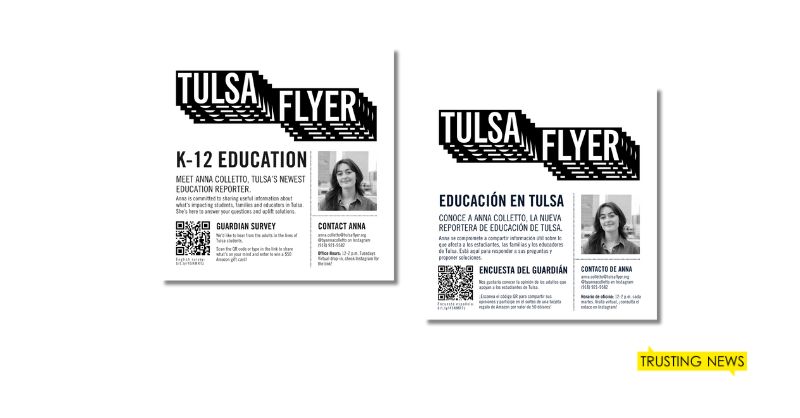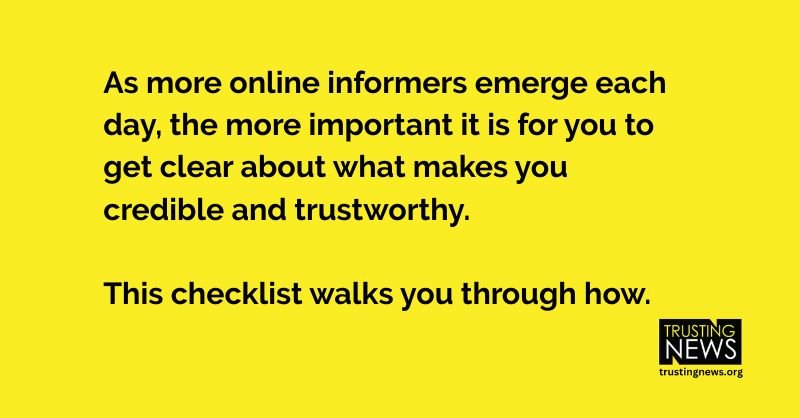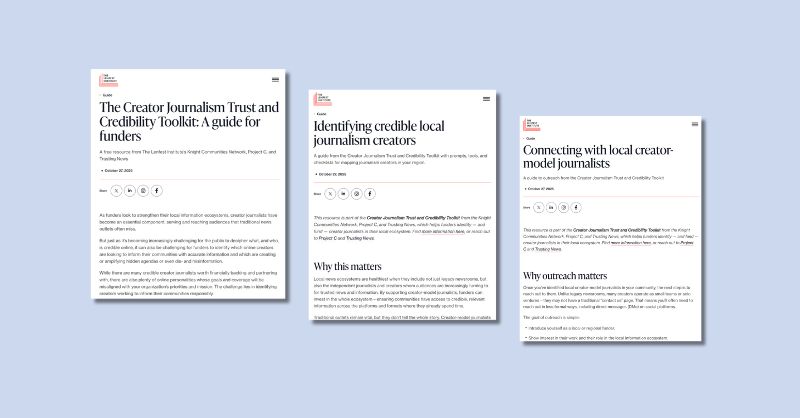
This weekly Trust Tips newsletter shares quick, actionable tips for how journalists can earn and sustain trust. Subscribe to get it in your inbox at trustingnews.org/newsletter.
Address immigration rumors in your community
Want to get this Trust Tips newsletter in your inbox each Tuesday? Subscribe here.
Many communities are seeing an uptick in immigration rumors and questions. In my area, I’ve heard rumors about ICE buses on campus and questions about increased border patrol enforcement.
With the breakneck pace of news, it makes sense that people are confused and struggling to keep up with what’s real and what’s not. That confusion is likely only amplified when rumors may be partially true, or mixed in alongside important, factual news updates.
If you’re seeing immigration rumors swirl in your area, don’t let your community linger in confusion and fear. Instead, help them navigate information and figure out what’s credible and what’s not. Establish yourself as a trusted source people can go to with their questions.
Here’s a great example of what that can look like from KQED. Earlier this year, they wrote an article directly addressing rumors surrounding local ICE raids and enforcement in their area.
In the article, KQED reporters Nisa Khan and Carlos Cabrera-Lomelí validate people’s fear and skepticism, acknowledging that it’s hard to tell what’s fact from rumor. They also go on to share tools and tips to help their audience determine the validity of the information they’re seeing spread online.

KQED also shared similar information in an Instagram Reel, echoing that it’s normal many people’s first instinct is to warn their neighbors, but that it’s best to verify information before sharing.

Steps you can take to dispel rumors
Whether addressing immigration rumors or other misinformation in your community, here are some steps you can take to be seen as a credible source and help your audience better navigate the news.
- Address widespread rumors. If you’re seeing questions and rumors spreading in your community, especially in conversation spaces your newsroom owns or helps moderate, address them head-on. While journalists don’t want to validate rumors or amplify false information, if a rumor is circulating widely enough, it can sometimes do more harm to not set the record straight.
- Validate and encourage skepticism. It makes sense that people are skeptical of the information they see. There’s a lot of information out there, and not all of it is good. With this in mind, encourage your audience to be skeptical and make thoughtful, careful choices. Validate that it’s smart to be wary of what they see online, and that they should absolutely question the values and opinions driving information.
- Point people to good information. Talk directly to your community about ways they can be smart about news consumption. Give them tools and resources to help decipher if what they’re seeing is bad information, and point them to places where they can get credible information. Here’s a great example of how Documented recently did this. After investigating how misinformation about immigration was spreading on TikTok, they compiled a list of TikTok accounts and creators who share solid immigration news.
- Think about distribution. Prioritize sharing this information on social or other places where you’ll have a chance of reaching beyond your normal user base. Many causal news consumers aren’t tapped into our news, so sharing it on other platforms gives you a higher chance of reaching folks who might not be tuned into your coverage but who may really need this type of information.
When to *not* address misinformation
There are legitimate arguments for not covering certain rumors or misinformation when discussing misinformation might bring more unwarranted attention to unverified claims.
While it’s up to individual newsrooms and journalists to decide on a case-by-case basis what makes the most sense for their community, we want to point you a helpful list from former organization First Draft to ask before covering misinformation.
- How much engagement has the rumor received, and how do these numbers compare to similar content on the platform?
- Is the discussion around the rumor limited to one community online?
- Has the rumor jumped platforms?
- Did an influencer or verified account share the rumor?
- Have large media outlets covered the rumor?
If our team can help offer insights and brainstorming while you weigh these decisions, please reach out by responding to this email or messaging us on LinkedIn, BlueSky or X.
If this is something you or your newsroom is tackling in your community, we’d love to see examples of your work!
At Trusting News, we learn how people decide what news to trust and turn that knowledge into actionable strategies for journalists. We train and empower journalists to take responsibility for demonstrating credibility and actively earning trust through transparency and engagement. Learn more about our work, vision and team. Subscribe to our Trust Tips newsletter. Follow us on Twitter, BlueSky and LinkedIn.

Project manager Mollie Muchna (she/her) has spent the last 10 years working in audience and engagement journalism in local newsrooms across the Southwest. She lives in Tucson, Arizona, where she is also an adjunct professor at the University of Arizona’s School of Journalism. She can be reached at mollie@trustingnews.org and on Twitter @molliemuchna.



